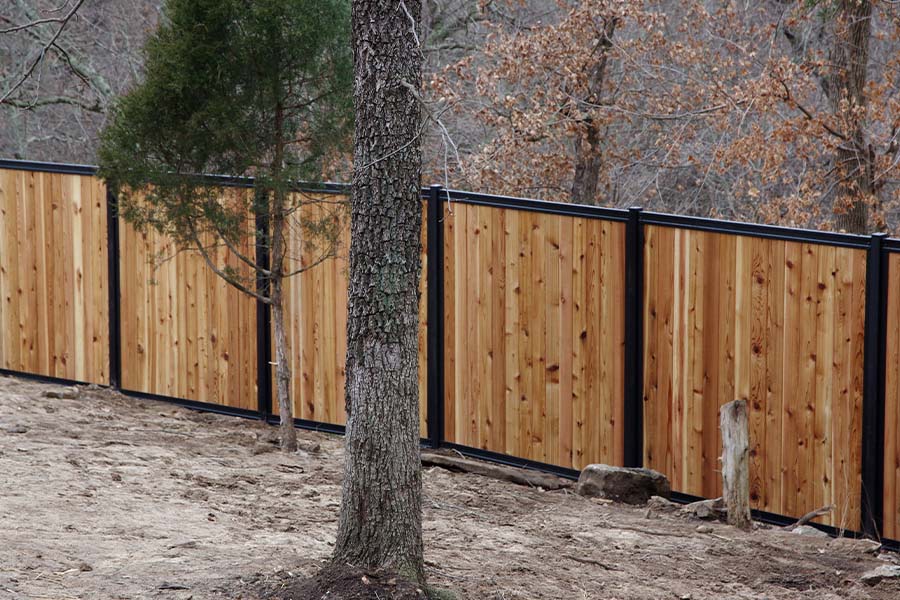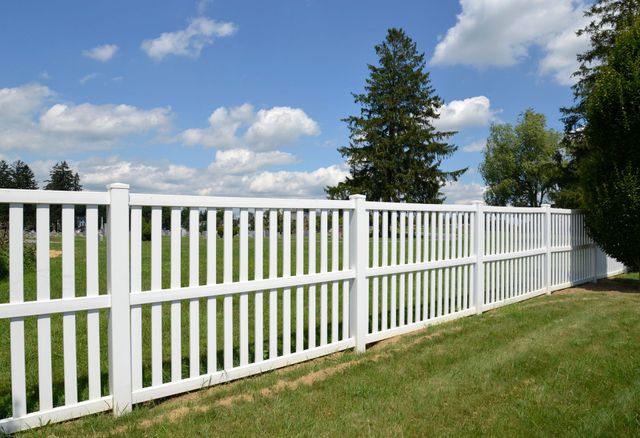All Categories
Featured

When it involves choosing the appropriate fencing material for your building, plastic, timber, and aluminum are amongst one of the most popular alternatives. Each product supplies distinct advantages that suit different needs, preferences, and spending plans. Understanding the advantages and disadvantages of each type can assist you make a notified choice based on your priorities, whether that's visual allure, toughness, or maintenance requirements. Below, we damage down the benefits and downsides of these three typical secure fencing materials.
Timber Fencing. Pros:
Visual Appeal: Timber fencings supply a natural, classic appearance that complements most kinds of landscaping and architecture. They can be quickly customized with paint or stain, offering you the liberty to develop the ideal color and finish for your residential property. Flexibility: Timber can be made use of to create a range of fence styles, from conventional picket fencings to a lot more modern styles like privacy fences or rustic ranch-style fencings. If your needs alter, it's simple to include or change to over time. Affordability: Wood is normally a lot more inexpensive than vinyl or light weight aluminum, making it an eye-catching option for home owners on a spending plan. The initial cost of a timber fencing is typically lower than the other products. Cons:

Maintenance Needs: Wood fences need routine maintenance, including staining, securing, or paint to shield them from weathering, rot, and bug damage. Without appropriate treatment, wood can wear away quickly. Longevity: Wood is vulnerable to harm from bugs like termites, and it can warp, fracture, or split gradually as a result of exposure to the aspects. In locations with extreme climate conditions, wood may require to be changed extra regularly than various other materials. Minimal Life expectancy: While timber fences can last for many years with appropriate care, they normally have a much shorter lifespan than plastic or light weight aluminum fencings. Plastic Fencing. Pros:
Low Upkeep: One of the largest advantages of vinyl fence is its reduced upkeep demands. Unlike wood, vinyl does not require to be painted, stained, or secured. It's resistant to fading, cracking, or warping, making it suitable for homeowners that want a problem-free fencing. Durability: Vinyl fencings are immune and very resilient to the aspects, including UV rays, rainfall, and humidity. They're likewise resistant to pests, such as termites, that can harm timber fencings. Selection of Styles: Plastic fences been available in a wide variety of shades and designs, and many simulate the appearance of timber without the maintenance drawbacks. You can select from privacy fencings, picket fencings, and even more to suit your requirements. Lengthy Life-span: With correct care, plastic fencings can last years, much longer than timber fences, and they come with warranties that give peace of mind. Disadvantages:
Greater Preliminary Cost: While plastic fencings can conserve money on maintenance over the years, they tend to have a greater upfront expense than wood fencings, which may be a deterrent for some purchasers. Limited Modification: While vinyl fences are readily available in a range of shades and styles, they do not have the modification flexibility that wood offers. You're limited to the pre-designed panels readily available, which might not fit every one-of-a-kind visual. Possible for Splitting in Cold Climates: In extreme cold temperatures, vinyl fences can become brittle and might crack under impact, making them much less suitable for areas with freezing wintertimes. Aluminum Fence. Pros:
Longevity and Strength: Aluminum is a lightweight yet solid material that withstands corrosion and corrosion, making it optimal for coastal areas or places with high moisture. Aluminum fences call for very little upkeep and can endure the components for several years. Visual Appeal: Light weight aluminum fencings supply a sleek, modern appearance. They are available in a variety of ornamental designs and can be utilized to produce a much more stylish or modern search for your residential property. Low Maintenance: Light weight aluminum fences don't require paint or sealing, and they're immune to rust and rust, making them unbelievably reduced upkeep gradually. Security: Light weight aluminum fences offer a higher degree of security contrasted to plastic or timber fencings as a result of their durable building. They can be furnished with gateways and locks to supply a safe limit around your property. Disadvantages:

Price: Light weight aluminum fencings are frequently extra costly than wood or vinyl fences, both in terms of materials and setup prices. This greater rate factor can be a disadvantage for budget-conscious property owners. Less Privacy: Aluminum fencings usually have a more open layout, with pickets spaced apart to allow presence with the fence. This might not be the ideal selection for your property if personal privacy is a top priority. Prone to Denting: While light weight aluminum is rust-resistant, it can still be nicked or bent if struck with force, such as by a car or heavy tools. While it won't corrosion, it may not retain its immaculate look if it obtains damaged. Which Material is Right for You? Selecting the ideal fencing material depends on your particular requirements, budget, and long-lasting strategies for your building. On the other hand, if you require a resilient, safe fence with a streamlined appearance, light weight aluminum might be the ideal material for you.
Inevitably, consider your climate, maintenance choices, and visual needs when deciding on your secure fencing product. Each alternative has its weaknesses and toughness, but with the best care and installment, all 3 can offer reputable and appealing boundaries for your building.
Latest Posts
Trusted Mechanic Services at Montclare Auto Repair - Schedule Now!
Published Apr 20, 25
2 min read
Inquire for Your Desire Occasion at Fun City Resort
Published Apr 20, 25
1 min read
Delicious Dining Options for Your Occasion at FunCity Resort
Published Apr 20, 25
1 min read